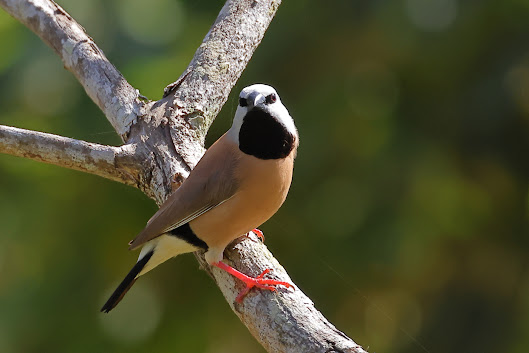Sunny morning and sudden drop in overnight temperature made for a fitting Tyto appearance today by Mr Cool, male Olive-backed Sunbird (
Nectarinia jugularis) in all his blue gorget glory. Also fitting, his perching on pandanus, as an old nest dangles from a nearby pandanus.
Also out in force - particularly vocal - today, White-browed Robins (
Poecilodryas superciliosa). Another four spotted during the morning.
Other recent Tyto sightings include notably blue Varied Triller (
Lalage leucomela). The species usually looks black and white. But early morn light would seem to have provided a glimpse of the male as seen by another bird. Most birds see in a much wider range of colour than us. Notice that the effect is not merely an unwanted blue cast over the image.
Nothing blue about Spangled Drongo (
Dicrurus bracteatus), again in bright morning light. Low- angled light has brought out the eye colour, which tends to be lost and quickly dulls as the sun climbs.
Young Brush Cuckoo (
Cacomantis variolosus) will soon lose attractive brown tones and turn duller grey.
White-gaped Honeyeater (
Lichenostomus unicolor) reveals strong grey eye colour and the gape that inspired its name, though it often looks more creamy yellow than white.
And a touch of violence from a recent morning. Typical brief flurry from Comb-crested Jacanas (
Irediparra gallinacea) competing for territory on the main lagoon. Waterboarding comes to mind as descriptive of the technique. Jump upon and submerge the foe. Oddly, the bout doesn't always go to the one most wetted. I suspect one bird loses interest and simply moves on. Pity people couldn't do likewise!


































